 |
| by Luca5 via Flickr Creative Commons |
When we looked at our home, as potential buyers, on a very cold day in January, we saw a lady bug or two and gosh golly weren't they cute!
 |
| by Mamboman1 via Flicker Creative Commons |
We looked at our house a second time and sure enough, there they were-- a couple cute lady bugs. OK, six-- but they're so cute.
 |
| by Automania (Mike) via Flickr Creative Commons |
When we did the walk through before we closed on our house on an even colder March day of the same year, you guessed it- a cute lady bug- or two- in every room.
And then one warm spring day ...
 |
| via BlogTo |
...they were every where.
And so our introduction to home ownership, complete with the discovery that sometimes your castle is not your own.
So let's talk about the annual autumn invasion of the ladybugs.
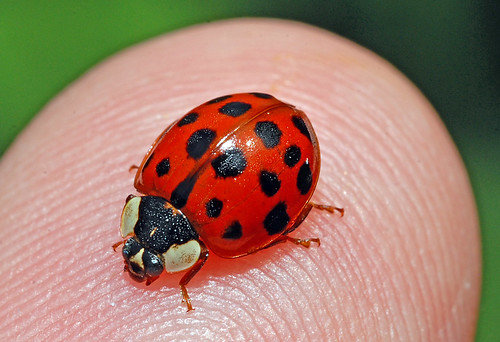 |
| by Jurgen Mangelsdorf via Flickr Creative Commons |
Some people will tell that the ladybugs currently being such an invasive pest are not ladybugs as we know them but a beetle from Asia.
STOP STOP STOP
Let's get this straight:
Yes, they are ladybugs.
All ladybugs are beetles.
(Sorry, didn't mean to yell.)
Living things in our world are ordered and classified in a hierarchy based upon their similarities to and differences from each other, a system called taxonomy (hang in there with me).
Here's how that classification breaks down:
The largest, broadest groups are divided into kindgoms and there are only five groups at this most basic level (animals, fungi, plants, etc). Each level is further subdivided into increasingly specific classifications.
Lady Beetles belong to the Class Insecta, obviously, which is where both bugs and beetles reside. There is a difference.
Bugs fall within the Order Hemiptera (half wings), beetles fall within the Order Coleoptera (sheathed wings). And all ladybugs fall within the Coccinellidae family.
So for our ladybugs, or more scientifically correct- lady beetles, the break down is:
There are over 5,000 species of Coccinellidae, with about 400 in North America alone. The species that is our pest in question is the Harmonia axyridis...
... the multi-colored Asian Lady Beetle.
 |
| from WikiMedia Commons |
Or the Harlequin Beetle, or the Halloween Lady Beetle (because it shows up at your doorstep in October).
The Multicolored Asian Lady Beetle does not come in one color and spot configuration but can look just about any ol' way it wants to in any ol' color it pleases. Look for an "M" or "W" on its "head" to identify it as our culprit.
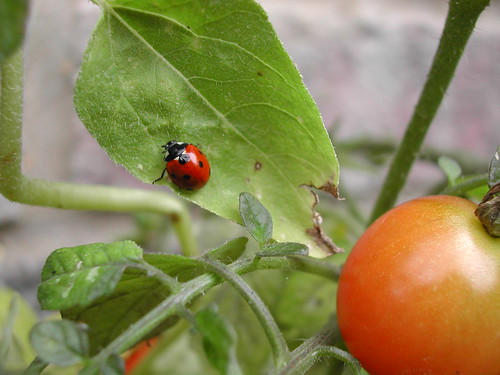 |
| by Mr Savoury via Flickr Creative Commons |
Ladybugs are ferocious predators, feeding on aphids, mealy bugs, and other garden pests and new species were introduced by the US Department of Agriculture between the 1960's to 1990's in an effort to control pests of agricultural crops.
Additionally, lady bugs have been sold to home gardeners...
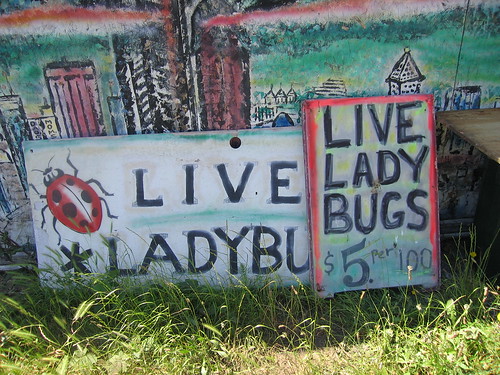 |
| by limbo via Flickr Creative Commons |
...but don't fall for this: just because you release a pound of lady bugs in your garden doesn't mean they will stay in your garden, happily munching on your aphids. Ladybugs do, after all, have wings and they generally just fly away. Sorry. My thoughts are to use flowering plants in and around your garden, such as dill, cilantro, yarrow, cosmos, coreopsis, and scented geraniums, that are naturally attractive to ladybugs for their pollen, which ladybugs eat as well.
The Asian Lady Beetle specifically, however, first appeared in Louisiana and may have arrived on cargo ships docking in New Orleans. She does not appear to have any natural enemies in North America and so went forth and multiplied. They laid eggs,
and then they hatched.
 |
| by Commox Valley Naturalists Society |
I know! Freaky, right? The ladybug larvae are just as varied as the adult. Since our lady is a beetle it undergoes complete metamorphosis, which means that the larval stage looks nothing like the adult.
Just like butterflies. (Insert smiley face here!!)
 |
| by jillmotts via Flickr Creative Commons |
And like a butterfly, which goes through several "molts" called instars, the ladybug larvae does so as well, growing larger with each instar.
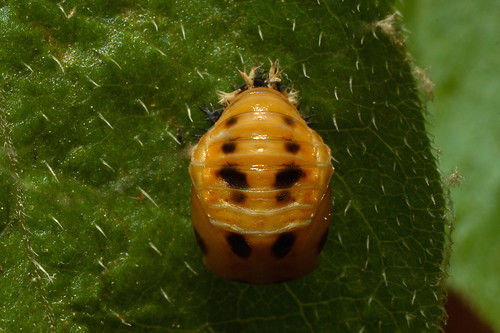 |
| by myriorama via Flickr Creative Commons |
After a few weeks of growing, the ladybug will then become a pupa. It will attach itself to a secure hiding spot and appear to fall asleep. During its nap, the lady bug begins to change shape and looks something like an itty-bitty shrimp.
Here is an adult that I discovered that had just wiggled it's way to freedom--
And there you are-- Lady Beetles.
 |
| by Saguaro Pictures |
By the boat load.
OK, I'm sure you find this all terribly riveting but what out the eleventy-billion in your house?
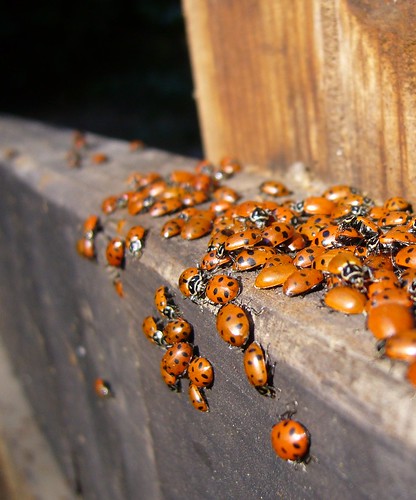 |
| by Stewf via Flickr Creative Commons |
In the fall, generally a sunny warm day after a couple days of cold weather, ladybugs realize that winter is coming and they need a warm place to crash. Your house will do just fine and they arrive in literal swarms. Ladybugs are apparently attracted to sunny illuminated surfaces such as the south or west facing side of your home, where they scurry around looking for a little crevice to hide in for the winter. Ladybugs hibernate below about 50 degrees F so once they get inside the walls of your home, they are content to stay there and sleep off the summer's excesses.
Sometimes ladybugs will find their way out into the living space of your home while they are roaming around looking for water. Ladybugs do not eat your upholstery, carpet, clothing, blankets, dog food, tortillas chips, or anything else during the winter. Most ladybugs that die in your house during the winter pass on from dehydration.
Control Issues
Just sweep them out the door or suck them up in the vacuum. If you are not a catch-and-release type person, be sure to seal or discard the vacuum bag as ladybugs have been known to crawl out of the vacuum and back into your house.
Do not smash ladybugs! Ladybugs, when threatened, will release a yellow-ish fluid from their legs as a means of defense. How is this yellow-ish fluid a defensive weapon?
It stinks.
And it stains.
Have you been told that the fluid is ladybug blood? True and false. Ladybugs have what's called hemolytic fluid ("blood-like") instead of actual blood. And it stinks.
This fluid is not harmful though some folks, like yours truly, have sort of an allergic reaction. I can smell ladybugs and their hemolytic fluid when they start to stir around inside the walls in the spring. Itchy eyes, runny nose.
Eradication Issues
Not possible.
OK, that sounds bad doesn't it? Once they are in your home there is no safe way to get rid of them. Bug bombs and fumigation will kill the ones out in the living spaces but it would take a HUGE amount of chemicals to reach the ones still snuggling inside your walls. The amount of pesticide needed to do so would indeed be toxic to the ladies but to your family and pets as well. Don't do it and don't buy the snake oil.
Plus, killing off large numbers of ladybugs may attract unsavory guests such as carpet beetles which will eat the dead ladybugs and then move on to, well, your carpet and coats in the closet, upholstery, etc.
It's best to just learn to live with or ignore the ladies for the winter. We think of them as insulation.
Prevention Issues
Ladybugs get into your home through cracks. Though it can be labor intensive, especially in an old creaky house like ours, seal around the windows and other vulnerable spots with a caulk gun. The added benefit is that your home will be more energy efficient.
In the spring when the gang starts to warm up and mill around, they will show up again in the living spaces of your home in large numbers. They're lost. They're trying to get outside so open windows, raise the screens, and let them go.
When Zippy was a little tot, we spent hours hanging over the arm of the couch watching five or six ladybugs crawl around on the end table, up and down the lamp, around the edge of a book and back, or just in staggering around in little circles. It's kind of relaxing. We learned to tell when they were about to take off and speculated as to whether or not they had a destination in mind or if they can actually steer. Seems they just leap off and hope to land some place good. My husband in particular was good at coming up with endless questions and speculations, and an occasional play-by-play of the adventure some ladybug was having that night. "Once upon a time, a ladybug went out for ice cream and she took a wrong turn....."
I would just as soon do without the annual visitors though it seems we haven't had as many recently as in past years. Maybe because there is now a huge white house on the next hill that is a brilliantly illuminated beacon on those sunny warm autumn days, outshining our now gray-painted abode, and thus attracting most of the winter get-away business. Maybe we've just gotten used to them. Who knows?
I do know that our ladybugs have given us hours of interesting conversation, especially when my dad the entomologist shows up. They were early models for my kid as she began drawing and they certainly have inspired lots of jokes at our house. And it's been fun to get to know them as part of this fabulously surprising world we live in. So next time you see one, exclaim, "Oh look, a ladybug!" and then just have fun watching.
Thanks for bearing with me on this long post and I do hope you'll visit again.

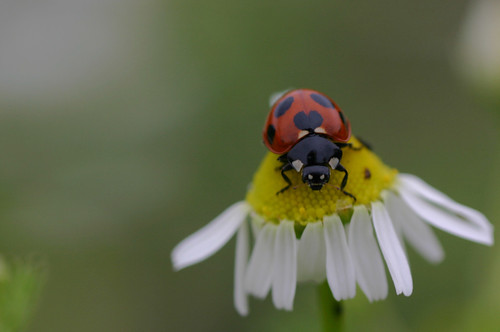
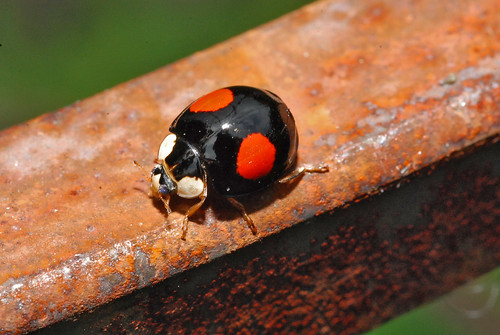


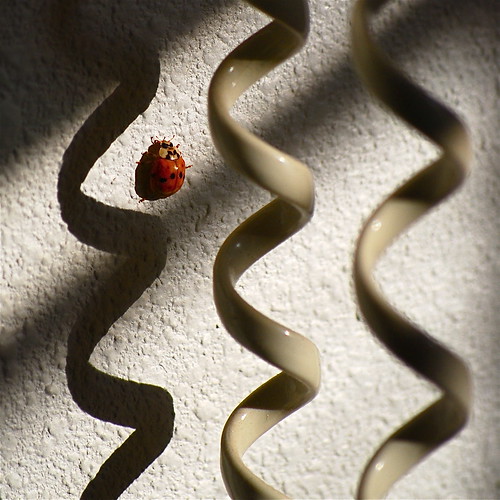
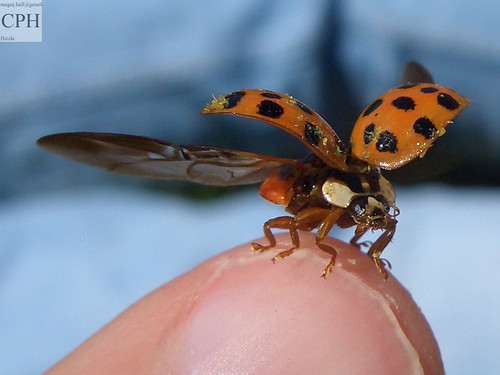






Aw, what a nice post! You broke it all down for us into bite-sized pieces, with great pictures. Marvelous job!
ReplyDelete